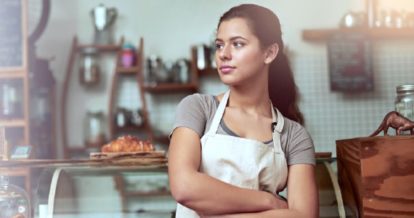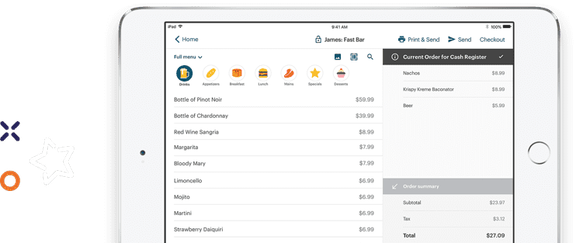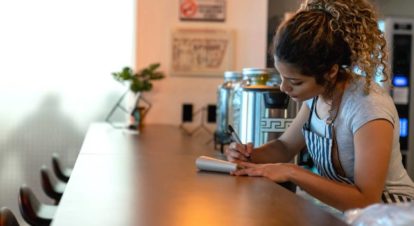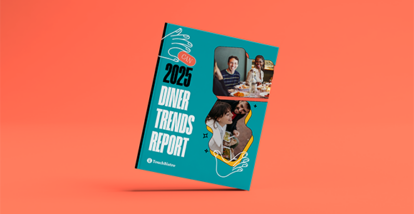By this point, we’ve all read the headlines about COVID-19 and the devastating impact it’s having on the restaurant industry. With restaurants closing their dining rooms, pivoting to takeout, and even shuttering their operations entirely, there’s no question that the restaurant industry will look very different when all of this is over.
But while headlines and statistics tell us how the industry is faring, that’s only half the story. We wanted to find out how real restaurants are dealing with COVID-19 on the ground. From setting up online ordering in a matter of days to creating employee relief funds, restaurateurs everywhere are coming up with creative solutions to keep their doors open, their staff employed, and their communities fed.
To hear these stories and find out how real restaurateurs are handling the COVID-19 crisis, we reached out to our TouchBistro customers and will continue to update this piece as the situation unfolds.
Creating a New Kind of Community Amidst COVID-19
Samira Mohyeddin, Banu, Toronto, ON: For Samira Mohyeddin, co-owner of the celebrated Iranian restaurant Banu, the early days of the COVID-19 pandemic were filled with uncertainty. “We closed fully for about a week and a half,” she explains, “We didn’t have any customers because we didn’t know what we were allowed to do and what we weren’t allowed to do.”
Eventually, Samira and her siblings made the decision to pivot to takeout, quickly signing up with various third-party apps. As takeout orders began to pick up, the family decided to expand into groceries, offering specialty Iranian items that are hard to find in downtown Toronto.
While Banu’s takeout and grocery business helped to make up for some of the revenue lost to indoor dining, the biggest loss for Samira was the sense of community. Creating a space for people to linger was part of the reason Samira and her siblings opened Banu in the first place, and now the restaurant’s dining rooms were filled with furniture and takeout containers instead of people.
“You know, you’re used to doing mise en place and setting up your restaurant a certain way and now it was just kind of like we’d just stamp our logo on the bags,” says Samira.“The restaurant itself looked like it was in complete disarray, we had all these tables inside that you couldn’t set up.”
But while customers were no longer lingering over cocktails and saffron chicken, Samira slowly saw a new sense of community emerging. After setting up a GoFundMe, donations poured in and $20,000 was raised for Banu. “It was really overwhelming at times,” Samira says. “When the funds started to roll in, I actually started to cry because I couldn’t believe it.”
With the donations and feedback from their loyal customers, the family continued to tweak its takeout and grocery model. Samira even began experimenting with ideas she and her siblings never had time to focus on in the past, such as packaging marinated meats for customers to grill at home.
For Samira, there’s no going back to the way things were before, and all of this experimentation with takeout and groceries is simply part of adapting to the new reality. Even when dine-in returns, she intends on giving Banu more of a market feel, where customers can still reserve a table, but also come and go.
“It will have an open-air market sort of feel where people will come and go, but still have a feeling of community to it.”
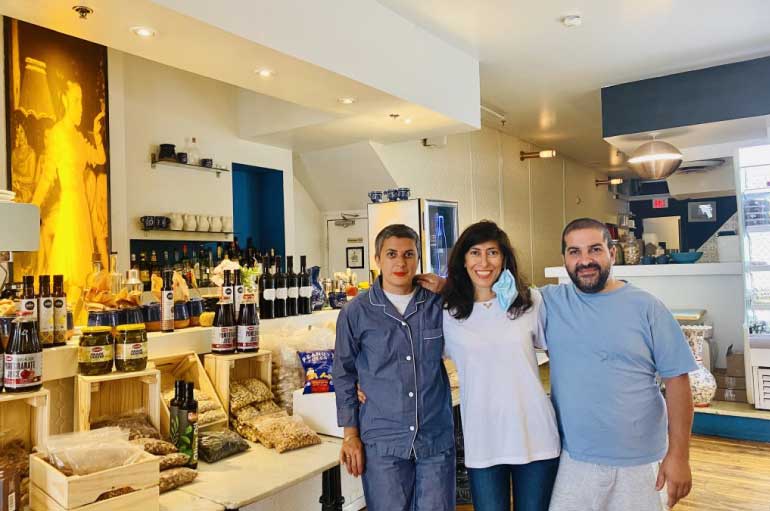
New Menu Favorites and New Faces at This Breakfast Bar
Gocha Hawkins, Gocha’s Breakfast Bar, Atlanta, Georgia: Just a year after opening, Gocha’s Breakfast Bar had a huge presence within the community and sales were increasing every day. And then COVID-19 hit.
“We’ve stopped our in-house dining, which was our main source of traffic,” says the restaurant’s owner Gocha Hawkins. “We’ve always offered takeout, but it wasn’t popular.”
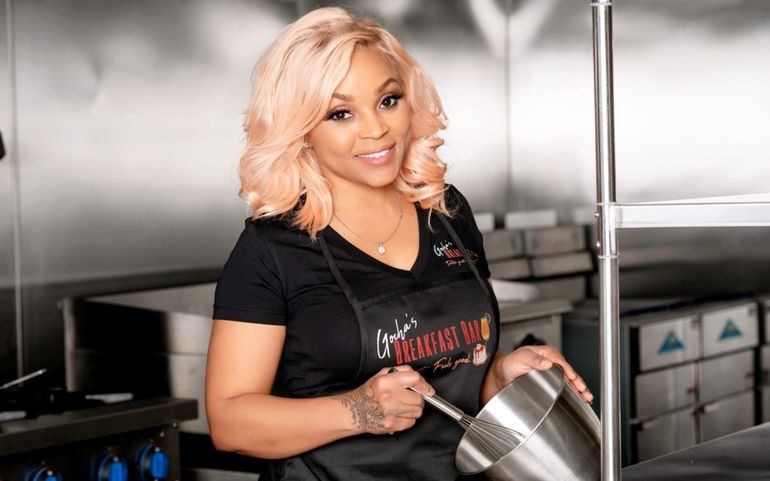
As the volume of takeout increases, Gocha is using apps like DoorDash and Grubhub for deliveries and is getting set up with TouchBistro Online Ordering, so the restaurant can start accepting orders through their own website and retain more of the revenue. “A lot of our clientele are older and are the most vulnerable right now, so we haven’t seen as much as them,” says Gocha, explaining that she’s hoping this will change when they get online ordering up and running.
For now, the third-party apps are bringing in new faces, giving her a stronger presence among the younger demographic who are comfortable with using this technology.
She’s also seeing a shift in the types of food that customers are ordering. Regular fan favorites like fish and grits, chicken and waffles, and pancakes are taking a backseat in favor of their open-faced, pan-seared salmon and egg croissant – a surprise for Gocha since it wasn’t a popular item when they had dine-in service. “We just started selling our pancake mix and margarita mix too,” Gocha says, something they’ve never done before.
In addition to the new menu items, customers are also taking advantage of the change in Georgia’s liquor laws and ordering to-go mimosas with their breakfast, a perk that Gocha says has helped boost the average check size at her restaurant.
To further increase sales during these uncertain times, much like other restaurants, Gocha’s Breakfast Bar will be offering gift cards. With such a large social media following, Gocha plans to promote this new offering through the restaurant’s Instagram account.
“We’re here for the community, we appreciate their support – we’ll get through this together.”
Foresight Is Key to Moving Forward
Chris Beard, 850 Degrees, Toronto, Canada: “Hindsight is a great thing,” says Chris Beard of 850 Degrees pizzeria. “But foresight is even better.”
It’s not that Chris predicted the pandemic and the effect it would have on restaurants. But he did see what was happening after the first emergency orders and the forced shutdowns and started making plans for how his restaurant would operate in the coming months. “I never believed this story of it’s going to be 14 days and we all just need to hunker down for that time and it’ll be all good. So we never shut, we never closed,” he says.
A destination restaurant just outside of Toronto, 850 Degrees has a robust menu of pizza, pasta, starters, wine, and beer – all with a focus on local ingredients and suppliers. Before COVID-19 hit, they offered both dine-in and takeout and employed a staff of 18. After, the menu was pared down and the staff numbers reduced. “Eighteen staff went down to two staff and myself. Unfortunately, I had to lay off everybody else,” Chris says.
And customers have appreciated Chris’ move to stay open. “Our community was really, really receptive,” he says. “Don’t get me wrong. It was nerve-wracking. Every night I’d go to bed and I’d think to myself, am I doing the right thing?”
Chris also turned to technology to help with the new business model of takeout only, setting up TouchBistro Online Ordering when it launched in early April. He says it only took two hours to get his online menu up and running. “What installation?” Chris says, when asked about the installation process. “You don’t have to do anything. You basically have it already because you’re using the till.”
Now, he can accept orders right from his website without any commission fees. Chris liked the fact that because he was already a TouchBistro customer, the setup was seamless and the product was easy to use.
Plus, having a direct online ordering platform is saving Chris money on third-party fees and extra staff. “It sounds silly but to have two people on the phone taking orders can be unproductive,” he says. “It also means that there’s a possibility of error.”
850 Degrees gets the word out about the restaurant’s online ordering through social media (they have an order button right on their Instagram account). They also run promotions and contests, as well as offer alcohol takeout, family deals, and meal kits to keep customers engaged and orders coming in. As for delivery, they’re on DoorDash right now.
“We’re doing well,” says Chris, commenting that he’s been able to bring back more staff, for a total of eight. “Obviously massively down from last year but doing well. Our head is above water.”
More than just above water, 850 Degrees has also reinvested in the community and helped those who need it most. They offer discounts to frontline staff and have given away 500 hot meals to people through the Salvation Army. You might say that foresight is still guiding this restaurant down the right path.
From Happy Dances to Happy Customers
Katty Chavez, El Atlakat, Miami, Florida: About to head into Miami’s peak season, this full service family-owned Salvadoran restaurant was doing really well. “And then all of sudden this hit and now we have 60% less revenue,” says Katty Chavez, Manager of El Atlakat.
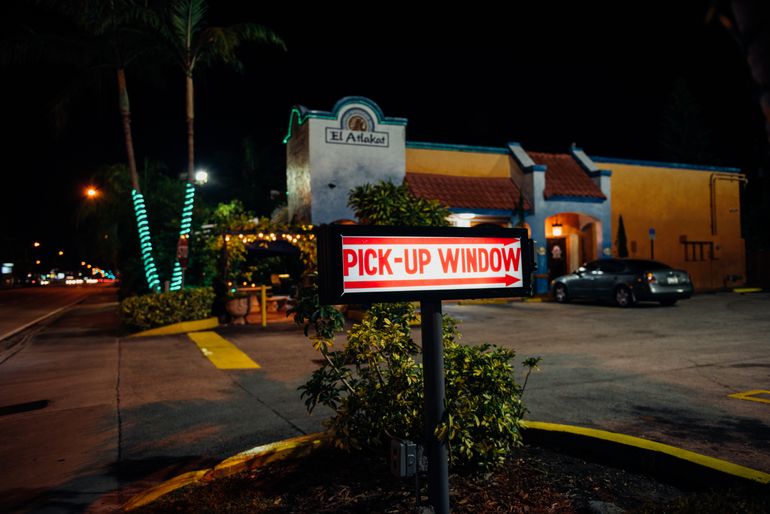
“We did have pick-up before, which made up about 30% of our total sales,” she says, explaining that the closure of dining rooms left her scrambling to find a way to offer takeout more effectively than over the phone but also not cut into her profits. “We were hearing from other business owners that all these delivery services – Uber and Postmates – weren’t reducing their delivery fees due to COVID.”
Katty also looked at making her own online ordering platform, but the cost was too high and the timeline too long. “And then TouchBistro magically appeared with Online Ordering and saved the day,” she says, explaining that it only took an hour to get up and running. “We literally did a happy dance when we received our first order.”
Because TouchBistro Online Ordering allows customers to order directly from restaurants – on their own websites or through tbdine.com – Katty was able to offer her diners convenience without losing a cut from each order.
But Katty says her choice wasn’t just about the cost. “I wanted as many of my employees to have jobs as possible,” she says. Some of El Atlakat servers transitioned to delivery drivers – at least one on from Monday to Wednesday and then two when it gets busy Thursday through Sunday. “We raised our server hourly rate from $5.75 to $10 per hour, plus tips.”
Pick-up is also a big revenue driver for El Atlakat right now, with customers taking advantage of their drive-thru window to maintain physical distance from staff and other customers. “The space used to be a Wendy’s,” Katty says, making the location ideal for contactless pick-up.
Since getting started, they’ve updated their online menu to include descriptions for each menu item, so diners know exactly what they’re ordering. And the feedback from customers has been nothing but positive – they just wonder why the restaurant didn’t have this kind of system sooner.
Now that El Atlakat is operating above board, we asked Katty what advice she would offer to other restaurants struggling right now?
“Listen to your customer,” says Katty. “Have a conversation. What do you need from us? A family meal that’s different from our regular menu? Discounts? Sometimes we get lost in trying to put out fires and we don’t open our ears. Entrepreneurs, restaurateurs, we’re used to moving, moving, moving. But now is the time to take a deep breath and think of things very, very carefully.”
When One Door Closes Due to COVID
Michael Bruno, The Blue Door Cafe & Bakery, Cuyahoga Falls, Ohio: “We have six aspects and each one of those could be a separate business,” says Michael Bruno, Owner of The Blue Door Cafe & Bakery, explaining that his restaurant tries to appeal to their customer base from all angles, offering everything from coffee to bakery items to a full dinner menu. “If we maximize all of those platforms then we will be successful.”
But when the pandemic hit, Michael says it allowed him to focus on a few aspects of the business that hadn’t been as prominent before, “namely takeout, the bakery, and coffees or lattes,” he says.
Michael added TouchBistro Online Ordering when it launched in April, allowing his customers to order directly from his website (you can see the experience order.tbdine.com). He’s making the most of social media to get the word out about how and what customers can order.
“I post every day about items that I feel will engage my audience and one of those is obviously the online ordering,” he says. “So, we get a lot of traffic through our website and then they access online ordering that way.”
And though he does have fewer staff than the 30 staff members pre-COVID, business is good and his bakery is working overtime to keep up with the orders. Michael uses TouchBistro POS to update the menu at the close of business every day, based on what baked goods will be available the next. “That takes maybe three minutes,” he says. “And then at six o’clock the next morning, it automatically activates so people can start ordering at that time.”
Michael also says one lucky move helped him keep the momentum going at the beginning of COVID.
“Right before the virus hit, I had taken out a loan to renovate my dining room,” he says, explaining that it ended up being good timing. “A lot of that was used to sustain the business. But now, the business has reached a steady state, and we’re doing just fine.”
Meal Kits (with a Side of Toilet Paper)
Eric Silverstein, The Peached Tortilla, Austin, TX: Friday the 13th has always had a reputation for bad luck. But for Eric Silverstein of The Peached Tortilla, this year’s Friday, March 13th was especially ominous because it brought the first noticeable dip in customers.
By the following Monday, Eric had already made the decision to shift to takeout and delivery, and turned his attention to family meal kits. “We ended up going with an aggressively priced family meal and multiple types of family meals,” he explains. “It just made sense.” Alongside these meal kits, The Peached Tortilla has also been selling everything from gift cards and merch, to toilet paper and other pantry staples. However, Eric is quick to point out:
“Ultimately, if we’re gonna be able to retain all these people and foot our fixed overhead costs, we’re gonna need a lot more than a few gift cards being purchased. Every little dollar helps for sure, but we’re just encouraging people to buy our meals.”
For Eric, continuing to serve food isn’t just about keeping his business afloat, but also about supporting his staff and other restaurant workers. Each day, 15 people can sign up to receive family meals, and The Peached Tortilla recently participated in an initiative to feed 100 displaced service industry people. It’s a sentiment that Eric hopes other restaurateurs embrace, arguing that it’s time to “accept the fact that you’re going to lose money and that nobody is going to come out of this not losing a lot of money. The name of the game is to just hang on for as long as you can until government help comes.”
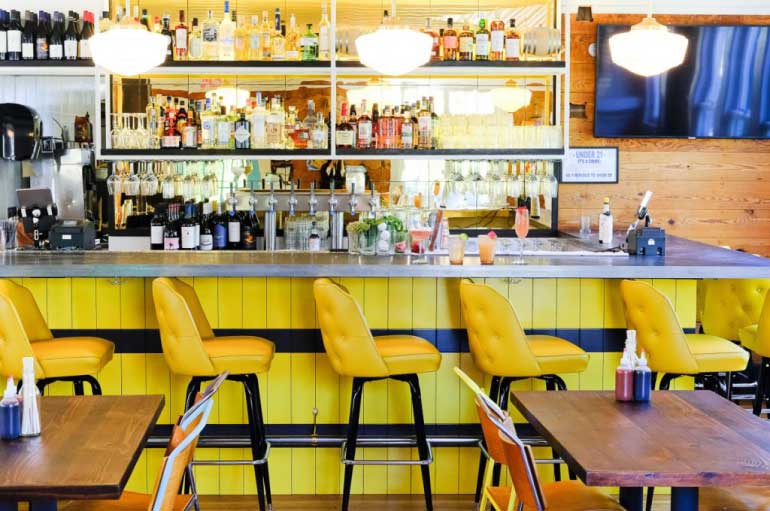
From GoFundMe to Congress
John Gallo, Pinch Kitchen, Miami FL: For John Gallo of Miami’s Pinch Kitchen, it was the lead up to St. Patrick’s Day that brought the first signs of trouble. Noticing his regulars had stopped coming in for dinner, John began preparing his staff for the worst. “We moved real fast down here,” he says. “It was one day’s notice from 50% occupancy to okay everybody’s closed, you’re only doing delivery.”
Forced to rethink his entire business operations overnight, John made the difficult decision to lay off virtually his entire staff and transform Pinch Kitchen into a pickup and delivery-only restaurant. While he was fortunate to already have third-party delivery apps in place, he quickly began building out the restaurant’s own pickup and delivery systems to avoid paying hefty third-party fees – something that’s more important than ever before. And it’s a move John’s regulars have been happy to support. “I’ll get feedback from the customers that they do pickup because they want to support us directly,” he says.
Pivoting to pickup and delivery has also meant major menu changes for Pinch Kitchen. Instead of intricate seafood dishes, John says “right now our bills are paid by our burger… anything that travels well.” The restaurant has also been selling greens and vegetables from local farmers as a way to support the suppliers who are so vital to the restaurant industry.
“This affects everybody, not just ourselves.”
But while he might have his inventory under control, John is working hard to support his staff through this unprecedented time. “For me, my biggest worry, my biggest focus is obviously the employees,” John says. Instead of pushing gift cards, he’s launched a GoFundMe for employee relief and joined the Miami Restaurant Employee Relief Fund. Through the funds, all of John’s employees and other hospitality workers in Miami can apply to receive a $250 grant. Pinch Kitchen has also applied to the SOBEWFF & FIU Chaplin School Hospitality Industry Relief Fund in the hopes of accessing up to $300,000 in funding to put towards paying his employees. John has even taken his fight to Congress, joining the support for a bill that would provide employees with six weeks of employee salaries. As John puts it:
“The name of the game right now is just survive. That’s all we’re trying to do.”
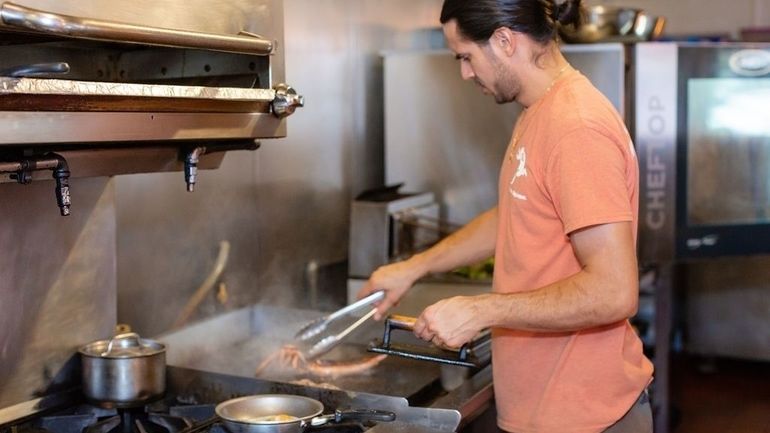
Brewing Through a Crisis
Joey Seaman, Bellwoods Brewery, Toronto, ON: Running a restaurant during COVID-19 is one thing, but it’s even more complicated when you also run a brewery. For the team at Toronto’s Bellwood Brewery, closing down the restaurant has meant quickly scaling up the brewery operations.
While the Bellwoods team has been able to continue brewing and producing beer under strict guidelines, the demand for online orders quickly became overwhelming – a problem that was further complicated when Canada Post stopped offering doorstep delivery of alcohol. This forced the team to find a new courier and shift their entire delivery system virtually overnight. “We had to quickly adopt new software and new systems to deal with an increased volume of orders,” Joey explains. “We had to change our packing system due to the volume, create our own assembly line, and staff accordingly.”
But while beer delivery is booming, the Bellwoods team has been working on adding yet another revenue stream to the business: transforming the closed down restaurant into a virtual farmers’ market. Selling everything from boxes of local produce to fresh flowers, the brand’s online shop will sell goods from all the suppliers and companies the restaurant usually works with. As Joey explains, “We’ll try to convert these lost sales into new sales.”
And so far, the gamble seems to be paying off. “Everything included, sales are about the same,” Joey says. “Even though the restaurant has closed, increased demand for our other streams has helped to offset the loss.” And with cash still coming in, the company is doing its best to keep staff employed – even if that means creating new positions on a moment’s notice. As Joey explains:
“So many of our staff are not doing their normal jobs, or are still without work. Everything we’re trying to do right now is aiming to find opportunities to get anyone who’s not at work, back to work.”
Plexiglass and PaPa’s Burgers
Lori Monty, PaPa’s Burgers, Parksville, BC: For Lori Monty of PaPa’s Burgers, rethinking her business model is something she’s familiar with. Having operated a successful food truck for three years, it was only in August of 2019 that she and her husband opened a brick and mortar location for PaPa’s Burgers.
But while PaPa’s Burgers has always been more of a drive-through and takeout spot, COVID-19 has brought on a whole new set of challenges – particularly when it comes to the safety of staff and customers. Maintaining proper social distancing in a 600-square-foot building has meant moving equipment, placing distancing markers throughout the spaces, and even installing plexiglass barriers. The barriers have proved particularly helpful as customers can tap their credit cards to pay for orders, without the need to use a pin pad.
But even with the additional safety measures and a $2.00 per hour wage increase, staffing has been a challenge. As Lori explains, “We only have one full-time cook who came back after we closed to reno the restaurant with plexiglass.” Though she and her husband have been able to take on many of the day-to-day responsibilities, finding enough staff to stay on during the pandemic remains a constant concern.
“Some of our staff are afraid to come in and there is not much we can do with that. We understand their concerns and we do the best we can to keep up with the volume.”
Despite the staffing shortages and longer wait times, the customers keep coming. “The community is very grateful we have stayed open and are tipping very graciously,” Lori explains. And it’s that community support that keeps her hopeful about the weeks ahead. “We are one of the few fortunate ones that have a good story to tell so far,” she says, “I just hope we can continue to stay safe and continue to support our local community while our community supports us.”
A Community Coming Together
George Saganis, Leto’s Steakhouse and Bar, Lacombe, AB, Canada: For George Saganis of Leto’s Steakhouse and Bar in Alberta, success during this time is all about engaging the strong sense of community that was built before the coronavirus took hold. “People trust us to prepare their food because we’ve been in business for 40 years,” says George. “If it wasn’t for the support of our community, we wouldn’t be in business.”
In addition to their sports-bar lounge and dining room, Leto’s has always had a strong delivery clientele. But they’ve seen the volume increase greatly since having to shut down the dine-in portion of their restaurant and move entirely to takeout. “We’ve changed our packaging to be all environmentally friendly with recycled materials,” he says. “We’re making sure all our bags are fully sealed and frequently sanitizing our ipads and debit terminals.”
Since supply availability is changing week by week, Leto’s is modifying their menu to match, selling mostly comfort foods rather than high-end steak. They’re using social media to market their new menu and have already seen substantially increased sales for their new items. They’re also making good use of their website, listing offers like 10% off pickup and delivery orders, half-priced bottles of wine, and 30% off craft beer and certain coolers. Plus, healthcare workers and first responders receive 30% off food orders, which George was encouraged to see had an immediate uptake. “We want to support them however we can,” he says.
George has also partnered with another restaurant in town, Eastside Eatery, selling their desserts in-house. “We’re just trying to help each other out. The cross promotion has allowed us to offer something sweet to our customers.”
In terms of staff, George laments having to lay off about 65%, cutting the team down to just kitchen staff. “Laying off staff was THE hardest part of all this,” he says. “But we are hopeful that we can get them back to work as soon as possible. We’ll see now going forward how things change.”
For now, George has brought his wife in to help and is taking on more roles himself, doing whatever is needed to fill in the gaps. Connecting more with customers has given him new ideas and a new perspective on the business.
“The main reason we wanted to stay open – because we can close any day due to COVID – is that we just want to be a small part of someone’s day. If they’re having a tough day, or if they just don’t feel like cooking. We just want to be a positive light in someone’s day.”
Unlike many challenges that restaurateurs face, there’s no playbook when it comes to handling COVID-19. As the situation further unfolds, we’ll continue to share stories from the restaurants directly affected by the crisis.
Want to share your story?
Contact us at [email protected]
